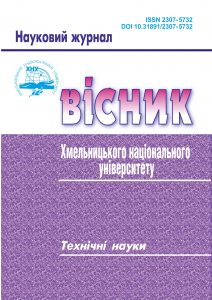SITUATION DIAGNOSIS BASED ON MULTI-HAZARD RISK ASSESSMENT
DOI:
https://doi.org/10.31891/2307-5732-2023-327-5-226-230Keywords:
method, risk, danger, situation, rune process, object, sandsAbstract
The Oleshky Sands, Europe's largest sands, were formed by glacial movement near the Dnipro River. Previously a landfill site, the area is now a semi-desert with diverse flora. Grazing sheep in the 18th century led to wind erosion and sand movement. An underground lake exists, but extraction is discouraged due to potential environmental impact. The article proposes a method for diagnosing situations in natural and man-made systems to support real-time decision-making in the context of disasters and multi-disasters. The paper proposes a method of situation diagnosis
in natural and man-made systems to support real-time decision-making in conditions of disasters and multi-disasters. The situation diagnosis method is based on identifying the areas that contain valuable objects with an assessment of the value above a certain critical level, that are at maximum risk. The proposed method of diagnosing the situation is based on the disposition of the set of valuable objects at critical risk, the set of
active disasters, and the set of manpower and resources for response operations. The result of applying the method is a categorization of the situations which allows decision-makers to quickly make adequate decisions in real time. The method identifies areas with critical assets at maximum risk, enabling adequate decisions to minimise these risks. It categorises situations into classes based on the severity of the risk and the feasibility of rescue operations. For instance, non-critical situations allow enough time for deploying methods to mitigate destructive processes, whereas highly critical situations may render rescue operations unattainable. This method is designed for use in real-time decision support systems, offering a comprehensive approach to managing spatially distributed multi-hazard risks.

